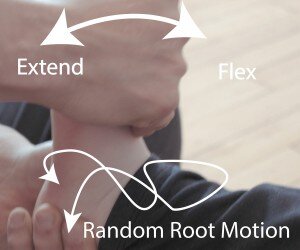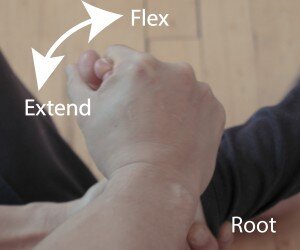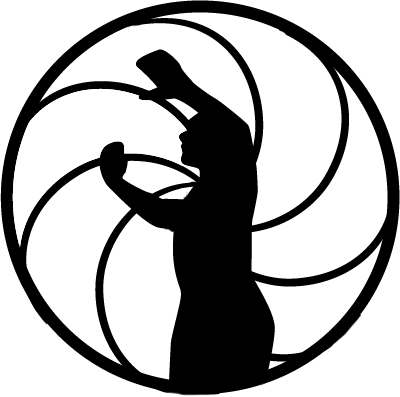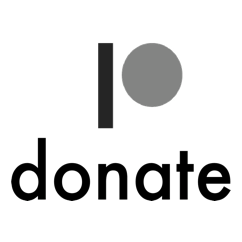One of the most gratifying aspects of developing Spiral Praxis has been to find new ways to help populations of people overcome obstacles in their lives. Recently, we’ve begun to focus on developing new somatic techniques for treating children with physical disabilities. Children with disabilities can suffer from a wide range of difficulties including severe muscular contractures, impairment of locomotion, weakness or even paralysis of muscle tone, and chronic pain. Most medical treatments involve various surgical techniques, medication (i.e. botox treatments), braces, and tedious physical therapy work.
Holistic Physical Intervention
In Spiral Praxis, we approach rehabilitation work in a holistic process that includes increasing body awareness, client-centered bodywork, and developmental motor re-education. Everyone works together—practitioner, child, caregiver and parents— to make sure that the rehabilitation process is a group participatory process. What is important is not just to implement a bunch of exercises but rather to understand and experience what the process of healing is like for the child.
In the studio, for example, we use a great deal of Spiral Praxis bodywork techniques that everyone learns and experiences so that treatment can proceed at home as well as during private sessions. Aidan, who is featured in the video above, is a child who was diagnosed with cerebral palsy early in life. As a result, he never learned how to roll, crawl or walk as typical children do. Through extensive body explorations, he is slowly re-learning these skills by developmentally going through all the stages of locomotion. We teach the techniques to his mother, Pamela, and also often have her experience the activities herself. This is the only way that she can know what Aidan is going through so how she can help in his healing process.
How are Somatic Body Manipulations and Techniques Different that Traditional Interventions
We have developed very sophisticated body manipulations to help Aidan release his contractures. Spiral Praxis techniques involve the active awareness of the child. We do not simply stretch his muscles or move his limbs to gain range of motion. The secret to the effectiveness of Spiral Praxis techniques is that they focus on the child’s awareness of his/her movement. When a child feels that his limbs have been “opened” and “released,” he will take great joy in his new found freedom and will want to explore this freedom by himself. This is how all processes of self-rediscovery begin.
We have developed very sophisticated body manipulations to help Aidan release his contractures. Spiral Praxis techniques involve the active awareness of the child. We do not simply stretch his muscles or move his limbs to gain range of motion. The secret to the effectiveness of Spiral Praxis techniques is that they focus on the child’s awareness of his/her movement. When a child feels that his limbs have been “opened” and “released,” he will take great joy in his new found freedom and will want to explore this freedom by himself. This is how all processes of self-rediscovery begin.
To give you a sense of the types of techniques we use, we will focus on a single technique which we often use to help children become more aware of their joint contractures. This technique is called the random root oscillation. In this technique, we flex and extend the body part that is experiencing the contracture with one hand (let’s say the wrist) while we firmly hold the distal base of this joint with the other. We establish the motion of the flexion and extension first with the root of the joint fixed; then we continue with the flexions and extensions with the root of the joint moving in random directions. The result of this bodywork technique is to impart a disorienting but highly focused awareness in the area of the contracture which often leads to the first stages of release. Try it on someone and see how they respond! In Spiral Praxis, there are a whole series of reflex techniques like the random root oscillation which can quickly and easily remove contractures without the need of surgery, bracing or dangerous medications.
Progress—It’s All About Love
Achieving effective progress in clients like Aidan requires active support from all the primary relations in Aidan’s family circle. Personal growth cannot simply be entrusted to professionals—everyone has a role to play. Aidan’s mother & caregiver attends almost all his sessions to learn the techniques and help Aidan with his progress. We all offer Aidan encouragement as he struggles with new physical possibilities; we all try to understand the difficulties that he must pass through to achieve lasting progress and take the responsibility of continually providing Aidan with opportunities to explore. With such loving participation, the process of healing becomes a beautiful community effort.
In the video above, we have documented some of the first phases of Aidan’s journey, including his first attempts to crawl. We hope you will see not only the inspiring physical signposts of his progress but also his great joy in reaching these milestones. Every child loves to move whether they are disabled or not. And with growing motivation, Aidan is slowly learning how to appreciate the wonderful possibilities of his own body.






